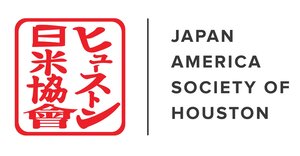Image provided by Embassy of Japan in the USA
This year marks the 10th anniversary of the 3/11 "Great East Japan Earthquake.” The National Museum of Asian Art, the Japan Information & Culture Center (JICC), and the Embassy of Japan invite you to commemorate the occasion with films by two master filmmakers who look at the disaster’s legacy.
Reserve tickets to stream the films by clicking the button below:
Image courtesy of Open Sesame Co. Ltd.
Voices in the Wind
Available in the US beginning March 12
Hailed by The Hollywood Reporter as a “hidden gem” of the 2020 Berlin International Film Festival, Nobuhiro Suwa’s moving drama was inspired by the “wind phone”: a phone booth with a disconnected rotary phone located on a hillside in Otsuchi, one of the towns that was devastated by the 2011 earthquake and tsunami. Visitors can “call” their deceased loved ones, and since 2011, tens of thousands have made the pilgrimage. Set in 2018, Suwa’s film tells the story of seventeen-year-old Haru (model Serena Motola), who lost her family in the disaster and now lives with her aunt in Hiroshima. When Haru’s aunt is hospitalized, she decides to hitchhike the hundreds of miles back to her hometown of Otsuchi to try to bring closure to her grief. In mainly improvised scenes, Haru meets various characters, all of whom are still affected by the disaster. "Going there eight years later,” Suwa has said, “you can’t see much of the damage, it has been rebuilt. But people’s feelings have not been fixed. Because you can’t see that on the surface, it is even more important that it is portrayed."
(Dir.: Nobuhiro Suwa, Japan, 2020, 139 min., Japanese with English subtitles)
Images courtesy of Nikkatsu Corporation
The Whispering Star
Available in the US March 26–April 11
Inspired by the ruined landscape of Fukushima, Japanese auteur Sion Sono (Love Exposure, Tokyo Tribe) created this eccentric science fiction parable about humanity’s destructive effect on the environment. Megumi Kagurazaka plays Yoko, a humanoid interstellar delivery robot who runs on AA batteries and travels from planet to planet in a spaceship that looks like a Japanese bungalow. During her journey, she becomes curious about the packages she carries—especially those bound for Earth, where humans have become an endangered species. The fact that the planet’s landscapes “were shot in evacuated zones of Fukushima, primarily with non-professional actors living in the area affected by the nuclear disaster, makes the film's themes of memory and decay that much more haunting. But The Whispering Star’s touch remains playful, funny, and very human,” writes Giovanna Fulvi of the Toronto International Film Festival, where the film won the NETPAC Award for World or International Asian Film Premiere.
(Dir.: Sion Sono, Japan, 2015, 100 min., B&W, Japanese with English subtitles)



